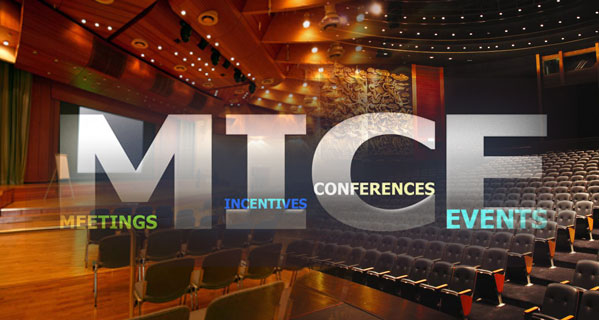MICE Travel Revs Up in Latin America

The MICE segment (Meetings, Incentives, Congress and Exhibitions) has endured a sea change in Latin America in recent years. The best way to bear out this assertion is by taking a closer look at the statistics published by the International Congress and Convention Association (ICCA). Yet we must first bear in mind the requirements outlined by this association in order to make a particular event be part of its stats. They are:
• To be held yearly in at least three countries
• To have at least 50 attendees
• To be organized on a regular basis
These figures reflect a nonstop uptick in a region that plans 10 percent of all events registered by the ICCA. And the repercussion is even bigger when those double digits are stacked up against a 7.2 percent market share back in 2002. Right now, the region is up to par with Asia and North America.
The figures include the Caribbean islands and it’s good to point out that until 2011 only Cuba, Puerto Rico, Jamaica and the Dominican Republic have made that list. However, beginning 2012 the Bahamas, Barbados and Haiti jumped on the MICE bandwagon.
None of this happens randomly. It rather has to do with a strategy mapped out by the region’s nations in a bid to get a bigger piece of the MICE pie worldwide. A major role in that respect has been played by the ICCA’s Latin American Chapter that recently held its second meeting, together with the 7th Client/Supplier Business Workshop and the Business Exchange, a couple of meets that calls for larger experience and information sharing in an effort to attract more events among its members.
As a token of the development achieved by Latin America in this niche, it’s important to say that a Latin American is now for the first time chairing ICCA: Uruguay’s Arnaldo Nardone, a man with vast experience under his belt in the organization of events and winner of countless recognitions for his contribution to the advance of both the sector and the region.
Yet if we look individually into some of the nations, we can see that a majority of them are imbued in different actions aimed at getting a larger market share of the MICE industry. Let’s take a look at some good cases in point.
Uruguay, a nation that had held 56 events according to the ICCA’s overall ranking, is currently working on the development of a new convention center and exhibition fairgrounds in Punta del Este, a move that will allow the country to host large-scale gatherings in the near future.
Argentina, the 18th nation in the ICCA’s world ranking, has opened new Convention Bureaus in recent years. A key factor to that outcome has no doubt been the South American country’s Tourism Meeting Marketing Plan that’s been underway since 2008. Another factor worth underscoring is Argentina’s election as the host nation of the ICCA General Assembly and Congress slated for the year 2015.
For its part, Panama is investing heavily in the opening of 3,000 new hotel rooms a couple of years from now and in the construction of a new convention center whose grand opening is scheduled for next year.
Brazil is just another standout. The huge South American nation is currently on the seventh spot of the 2012 ICCA World Ranking with a grand total of 360 events.
Though featuring a lesser involvement in the segment, the Caribbean islands combined make a hefty contribution to the region’s overall figures, with Puerto Rico leading the pack with 23 events, followed by the Dominican Republic with 15 and Cuba with 9 in that same year.
These statistics embrace associations’ events and do not include an assortment of other gatherings held in the region on a regular basis, such as governmental meetings, corporate powwows, sports tournaments and cultural festivals. Therefore, the variety of events in the region is far bigger than what the figures actually reveal.














